| Columns Retired Columns & Blogs |
It looks like I have another speaker to recommend to friends who are 'just music-lovers'... Thanks!
I used DRA Labs' MLSSA system, a calibrated DPA 4006 microphone, and an Earthworks microphone preamplifier to measure the SVS Prime's frequency response in the farfield. I used an Earthworks QTC40 mike, which has a ¼" capsule, for the nearfield responses. The TosLink optical input locked to data with sample rates from 44.1kHz to 192kHz. I performed a complete set of measurements using the Prime's analog Line input, repeating some of the tests using the TosLink input. For these tests, I converted the MLSSA signal to 24/96 digital using my Ayre QA-9 Twenty A/D converter; as the Ayre doesn't have an optical output, I converted its AES3 output to TosLink using my Z Systems digital preamp set to Bypass.
As the Prime is an active loudspeaker, I calculated the single-ended input impedance by using spot frequency tones generated by my Audio Precision SYS2722 and examining how the nearfield sound pressure level dropped when I increased the source impedance from 20 ohms to 600 ohms. The impedance calculated with this method was closer to 10k ohms than the specified 20k ohms. SVS doesn't specify the speaker's sensitivity. With the unbalanced input fed white noise at a magnitude of 580mV and the speaker's volume control set to its maximum, the B-weighted spl at 1m was 82.5dB(B).
I investigated the enclosure's vibrational behavior with a plastic-tape accelerometer. The cabinet vibrated at the port-tuning frequency, and a strong resonant mode was present at 258Hz (fig.1). Although this mode has a high Q (Quality Factor), which will work against audibility, its frequency is close to that of Middle C in the musical scale (261.6Hz). It may well be sufficiently excited to give rise to some congestion in the midrange.
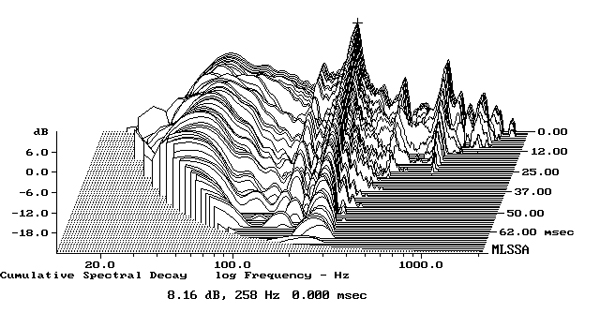
The blue trace in fig.2 shows the nearfield woofer output, the red trace that of the port on the speaker's rear. The notch at 46Hz in the woofer's output indicates that this is the port's tuning frequency, which implies relatively extended low frequencies for a small loudspeaker. Both the woofer and port outputs roll off very quickly below that frequency, which suggests a high-pass filter in the woofer feed to limit low-frequency excursion. There is a slight notch in the woofer's response and a very slight discontinuity in the port's output at the frequency of the panel vibrational mode noted earlier. More significantly, there is a very strong resonant peak in the port's output just below 600Hz.
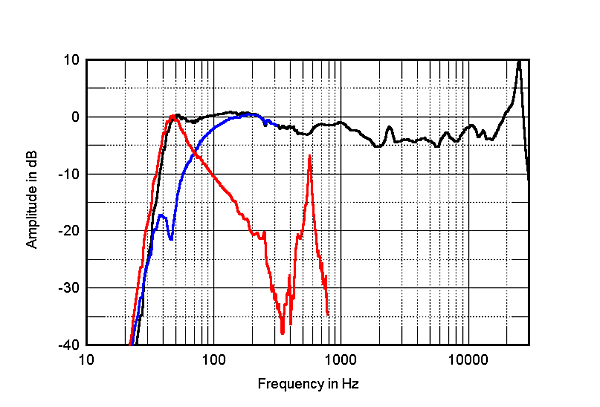
The black trace below 500Hz in fig.2 shows the complex sum of the woofer and port outputs taking into account acoustic phase and the fact that the port is mounted on the Prime's rear panel. The low-frequency rolloff is steep, and there is little sign of the peak in the midbass region due to the nearfield measurement technique, which assumes that the drive units are mounted in a true infinite baffle, ie, one that extends to infinity in both planes.
The farfield response on the tweeter axis, averaged across a 30° horizontal angle (fig.2, black trace above 300Hz) is relatively even, though there is a slight lack of energy in the presence and mid-treble regions. The sharp spike at 25kHz is due to the aluminum-diaphragm tweeter's fundamental dome resonance, but of greater concern, given the human hearing sensitivity in the same region, is the response peak between 2kHz and 3kHz. Fig.2 was taken without the speaker's grille. With the grille in place, some narrow, low-amplitude suckouts were centered on 3.6kHz, 6kHz, and 15kHz, but the response was otherwise identical.
The Prime's horizontal dispersion, normalized to the response on the tweeter axis, which therefore appears as a straight line, is shown in fig.3. The contour lines in this graph are evenly spaced, with the radiation pattern smoothly narrowing in the treble. Fig.4 shows the speaker's dispersion in the vertical plane. A suckout appears at 2.3kHz, close to the specified crossover frequency between the tweeter and woofer of 2kHz, 15° below and 20° above the HF axis.
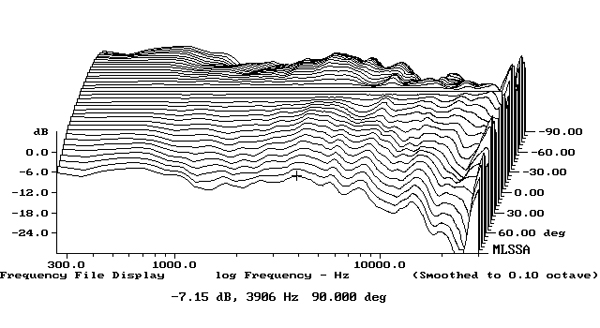
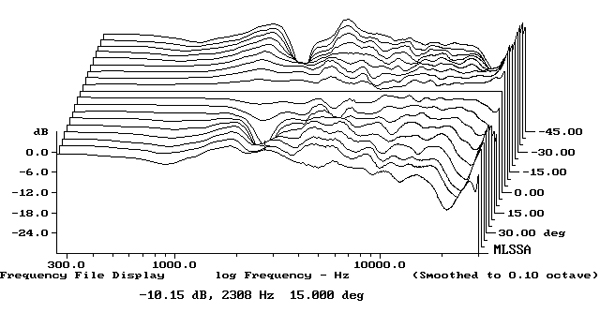
In the time domain, the Prime's step response (fig.5) indicates that the tweeter's output arrives first at the microphone and is connected in negative acoustic polarity. The positive-going start of the woofer's step blends with the decay of the tweeter's step, but its decay is overlaid with oscillations. With a passive loudspeaker, it takes 3.7ms for its sound to arrive at the microphone 50" away. This graph was taken with the analog Line input, and the tweeter's output arrives at 4.72ms. The slight delay compared with a passive speaker will be due to the latency of the SVS speaker's A/D and D/A converters. Repeating the capture with the TosLink digital input gave an identical step response, except that the tweeter's output arrived at the microphone 0.32ms earlier than with the Line input. This is presumably due to the fact that there is now no A/D converter in the signal path.
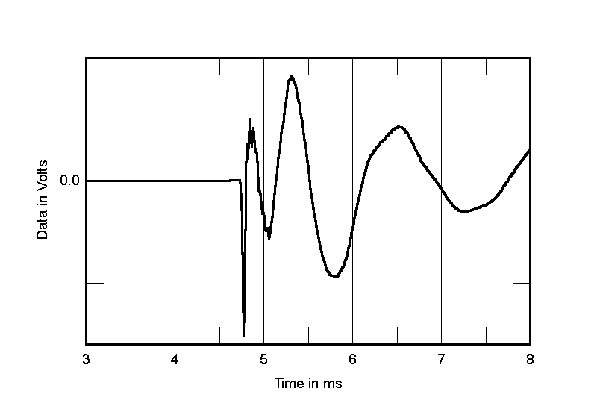
The Prime's cumulative spectral-decay plot on the tweeter axis (fig.6) is superbly clean in the region handled by the tweeter. However, there is a ridge of delayed energy at 2.4kHz, the frequency of the peak in the farfield trace in fig.2. (As always in my CSD graphs, ignore the ridge just below 16kHz, which is due to interference from the test computer's video circuitry.)
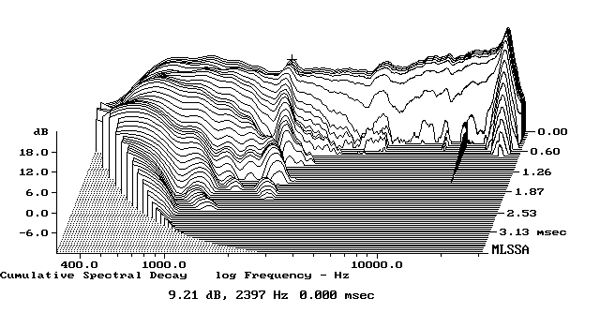
The SVS Prime's measured performance is mixed. On the plus side, there is the relatively flat farfield response, the well-controlled dispersion in both the horizontal and vertical planes, and the clean decay of the tweeter's output. But that strong enclosure resonance at 258Hz, the resonance just below 600Hz in the port's output, and the ridge of resonant energy at 2.4kHz may well have audible consequences.—John Atkinson

It looks like I have another speaker to recommend to friends who are 'just music-lovers'... Thanks!

How long is the required interconnecting cable , that is , how widely may they be separated ?

In stand mount application, with tweeter at ear height for seated listener, approximately 1 meter above the floor, with the cable running along the floor, that uses nearly 2 meters of cable just to reach the floor from both loudspeakers, leaving a little over 1 meter for separation distance between the pair, which seems to be grossly inadequate for most applications other than using these as powered multimedia desktop computer speakers. The review should have highlighted the short length of that cable.
The cable assembly is terminated with cable end connectors which seem unusual in this application, maybe Molex connectors. If you want to assemble a longer cable for your application, you will need to investigate / reverse engineer that unusual OEM cable assembly, acquire the connectors, contacts, suitable crimping tool, etc.
I would have liked to have seen use of 4-pole Speakon connectors, commonly used in professional audio applications and easily assembled.

SVS provides alternative cable lengths of 15' and 20'... so no reverse engineering required. All you have to do is email them when you order... I opted for the 15' cable that I needed separation for in a large bookshelf, and they didn't charge me any extra. There you go...